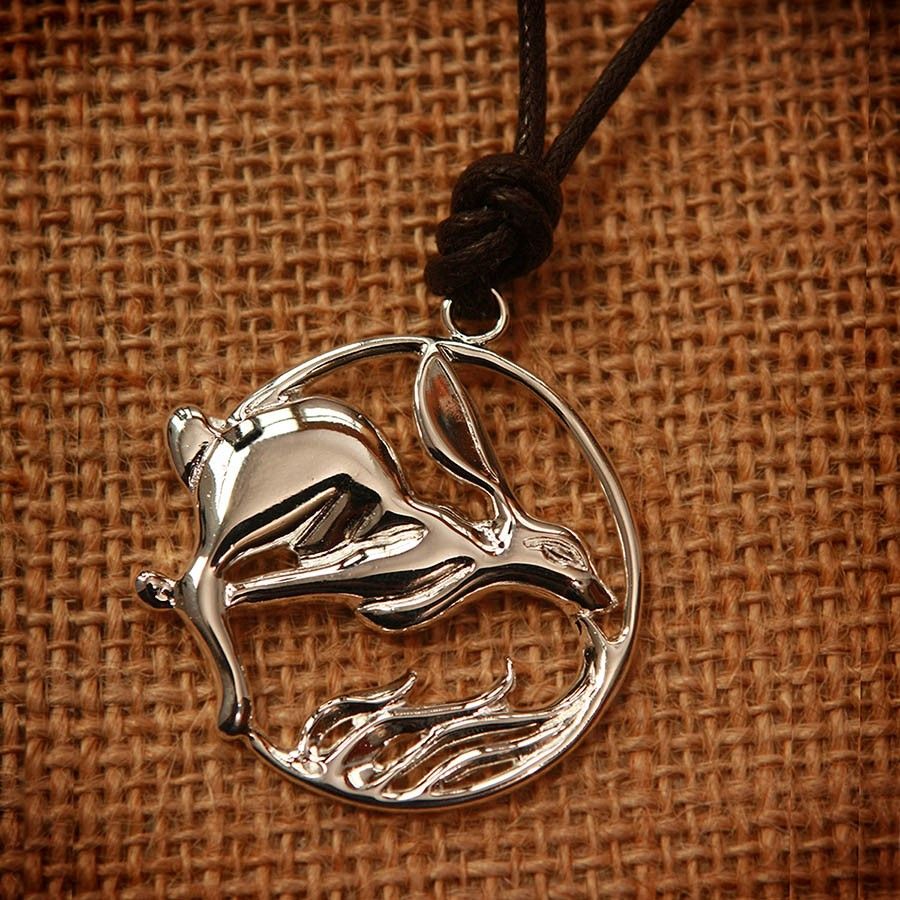The Hare Runs into the Fire
Published:

My wife gave me this necklace a few years ago, and I always wear it. People will often ask me about it. Most of the time, I just describe what it is “it’s a hare jumping into the flames” and explain that it’s from a book that I rather liked. I don’t usually go into it in much more detail, but it’s an item that holds a lot of meaning for me. So, today, I thought I might try to tell everyone here about what this necklace means to me, and by extension tell you something about myself.
The image itself is striking. A hare, frozen in motion, leaping into fire. It’s not a typical symbol you’d wear around your neck. Most people expect a cross, or a gemstone, or maybe a family heirloom. But this little piece of metal, for me, is a reminder. A touchstone. A story.
IIt comes from a novel called I Shall Wear Midnight, written by the late Sir Terry Pratchett. The protagonist, Tiffany Aching, is a young witch coming of age. It’s a story about responsibility, identity, and courage—about what it means to grow up and carry the weight of who you are, even when the world doesn’t quite understand you. And throughout the story, Tiffany is haunted by a line from a folk saying: “The hare runs into the fire”
She remembers, as a child, seeing real hares do this – running not away from the fire, but into it. It is a memory that stays with her, mysterious and unsettling. Rabbits are not known for bravery, they’re a run first and ask questions later sort of animal.
This is not just a literary metaphor. In agriculture, there is a practice called stubble burning. Farmers set fire to the straw stubble that remains after grains, such as rice and wheat, have been harvested. The technique is used to quickly and cheaply clear fields, and it is still widespread today.
As a field burns, the fire spreads quickly through the dry stubble burning everything in its path. Most animals flee away from the fire, but hares in contradiction to all survival instincts leap into the advancing flames. What Tiffany and the audience come to understand throughout the novel is that because the flames spread quickly and consume their fuel just as quickly, leaping into the fire is a fantastic survival technique. The hare lands on the other side of the advancing wall of flames in a scorched wasteland, but beyond a bit of scorched fur and a few burned off whiskers, the rabbit is unscathed. She is transformed but she is not annihilated.
The hare runs into the fire.
The fire, it takes her, she is not burned.
In my life, there have been moments where it has felt like the entire world is collapsing. I have seen the wall of fire barreling towards me with maniac speed. The temptation is to run away from it. For much of my life, that’s exactly the way I would have responded. I thought that survival meant retreat, that it’s better to live to fight another day. I would seek to avoid pain, and delay hard choices. But avoidance has a cost. It can leave you trapped on the wrong side of that fire left with no viable options.
At some point along the way, I changed. Not because I was brave or certain but because I realized that sometimes the only way out is through. I decided to stop running away from change, uncertainty, and the unknown. Now, I rush headlong towards it. I have been transformed. My life looks nothing like it did a few years ago. At first, change feels like emerging into that scorched field. It is an apocalypse, but the carbon from the ash makes its way into the soil, and the world goes to work regrowing. Today, we are discussing the beginning of gardening season. Spring is a time of new beginnings, but every new beginning requires an ending.
Today, I live in a new home. I have a new job, a new partner, a new state. But I still wear this necklace every day, because it reminds me: I made it through. I’m still here. Changed, but not broken. Singed, but still standing. And when I look back, I realize—those moments when I leapt into the fire? They were the moments that saved me.
Each of us, at some point, will face our own flames. Maybe you’re facing them now. Maybe it’s fear, or grief, or a decision you don’t know how to make. The instinct will be to run. That’s okay. That’s human. But I want to offer another option.
Think of the hare.
Think of her, mid-leap. Not because she knows what’s on the other side, but because she knows she can’t stay where she is. She moves toward the fire, not away from it. And in doing so, she finds freedom.
The hare runs into the fire.
The fire, it loves her. She is free.
